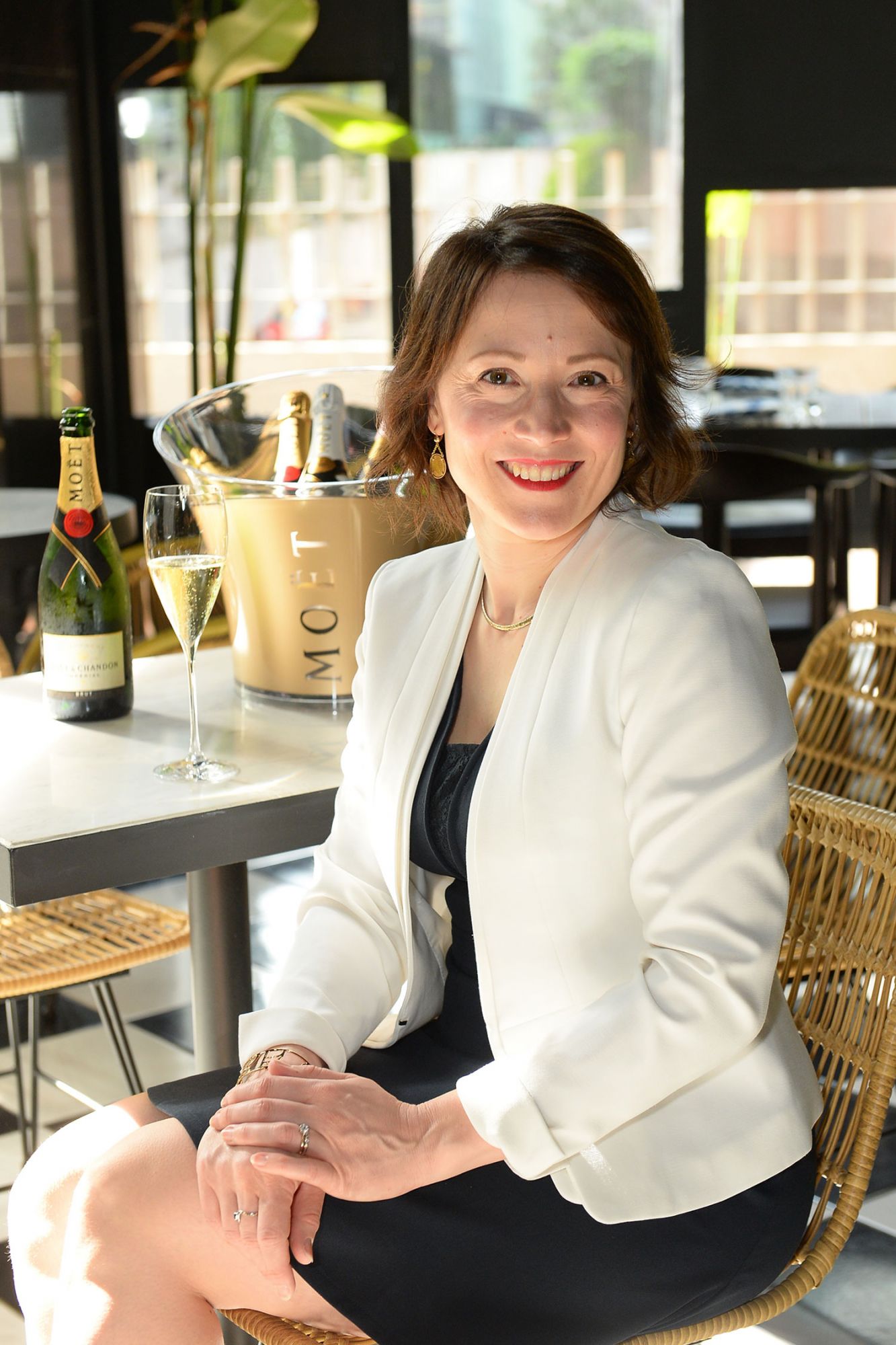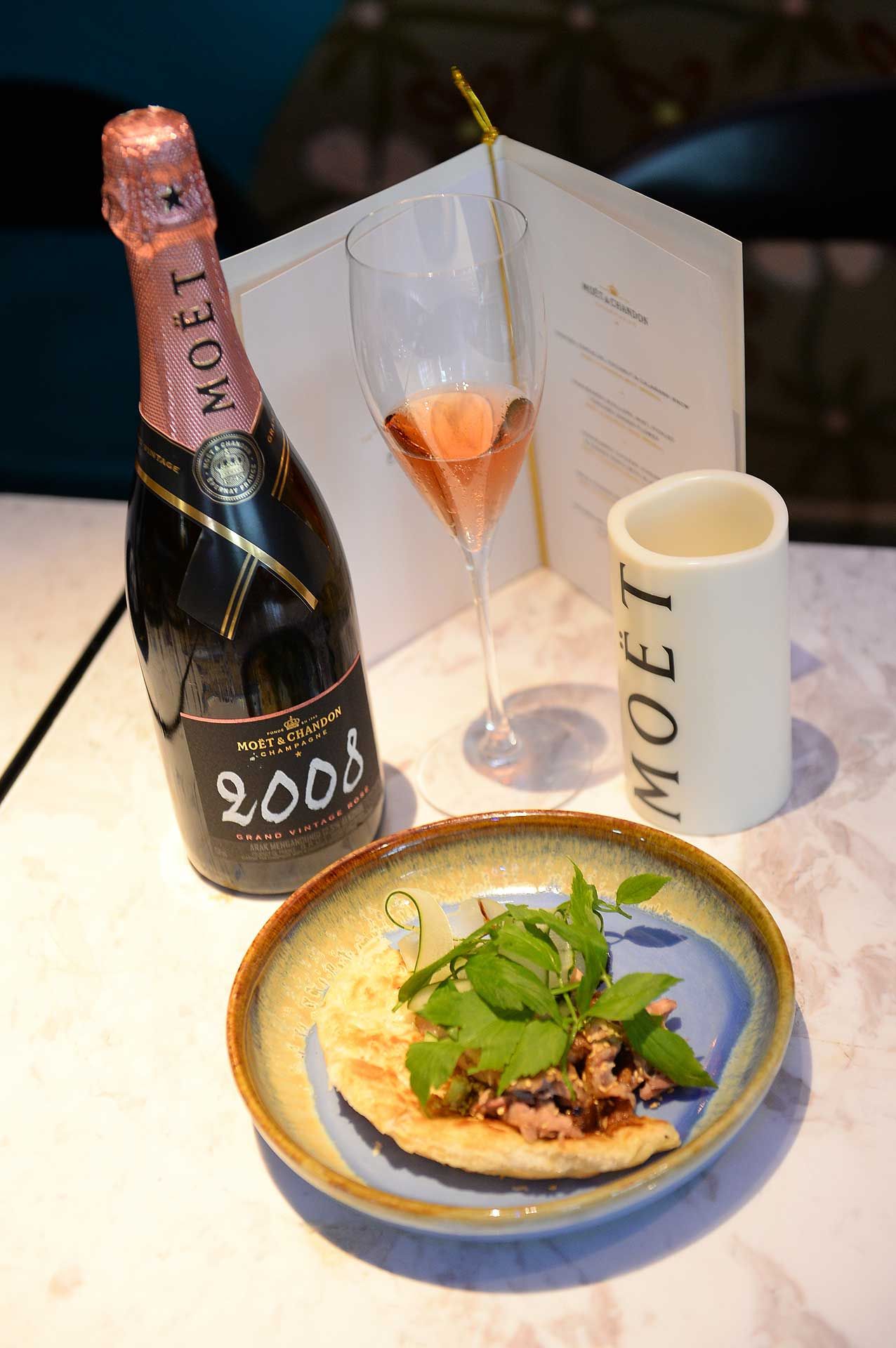
Marie-Christine Osselin, renowned champagne maker Moët & Chandon's oenologist, recently took a trip to Kuala Lumpur to give journalists a crash course on the winemaker's current line of wines and why they surprisingly pair well with our cuisine.
Malaysia Tatler was invited to modern Malaysian restaurant Beta KL for lunch to sample a degustation menu paired with five different champanges – Moët Imperial,, Moët Rosé Imperial, Moët Grand Vintage 2009, Moët Grand Vintage Rosé 2008, and Moët Ice Imperial.
After the meal, we spoke to Marie-Christine to learn a little more about why and how the maison's champagne played nice with local flavours.


